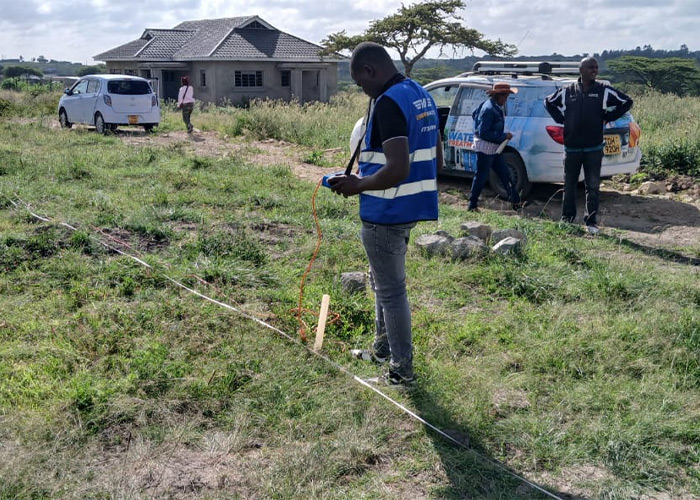What do you need water for? To irrigation, animal feeds, swimming pool? To provide household water to a small rural community or farm household? Or maybe even to service a multi-hectare irrigation scheme. Whatever your requirements are, nothing beats a source of cost-effective water right where it’s needed. And in most cases, that solution is a borehole.
But drilling a borehole requires some research and planning… We trust that the answers will help to make the borehole drilling process as smooth as possible for you and that they’ll help you to get the best return on your investment.
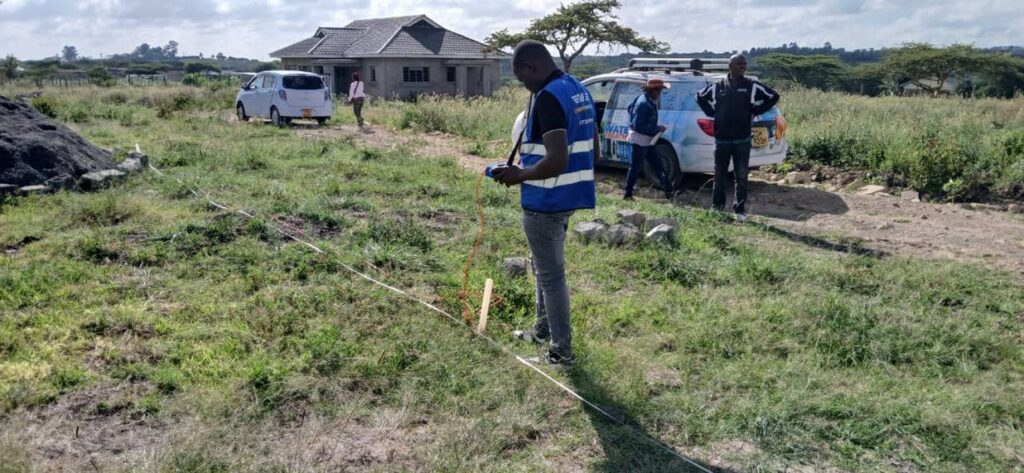
- DO I NEED TO REGISTER MY BOREHOLE?
Essentially, if you’re using your borehole water for domestic use, gardening or even for commercial purposes, then you do not need permission or registration in terms of the Water Act of Kenya Law.
Take note that your local municipality can require registration of the borehole. We suggest that you contact your local municipality to check on the latest bylaws.
WHERE IS THE MOST LIKELY PLACE TO INTERSECT A RELIABLE AQUIFER?
Start with some basic research. Are there producing boreholes close to you? If there are, this is a good sign, but it is not a guarantee that you will be assured of water. You can also talk to a WRA Offices that operates in your area to get an idea of how many boreholes they’ve drilled in your area and how much water these boreholes are yielding.
Given that this is a significant investment, you may wish to use the services of a hydrogeologist before you start drilling. A hydrogeologist can carry out a survey of your property in order to pinpoint the spot which offers the best chance of intersecting strong water flows. To do this, they would make use of published data (e.g. groundwater maps) and in some cases, geophysical instruments. In the right conditions, these methods have a very good level of success.
WE’VE HIT WATER! NOW WHAT?
If a water source is intersected, it is possible to get an idea of whether or not it is viable to continue with the development of the hole. Most drillers offer yield testing services.
After flushing all the loose cuttings and material out of the hole, the next step is to install a test pump and measure how much water can be sustainably pumped for an acceptable amount of drawdown in water level. Briefly, a yield test is done by pumping a measured flow rate from the hole while monitoring the drawdown in water level. This will be done over a defined period of time. While a genuine yield test brings with it extra costs, the money is worth every cent.
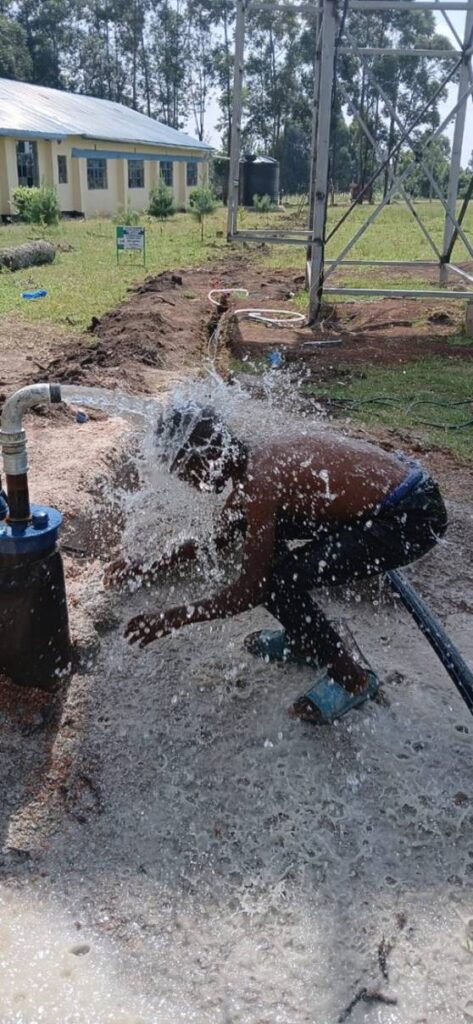
WHAT KIND OF BOREHOLE PUMP WILL I NEED?
You may wish to have a second contractor select and install a pump and ancillary equipment or as driller we are in a position to offer a turnkey service.
Pumps fit into three categories: too big, too small or just the right size for the job. Good selection and years of trouble-free operation starts with reliable borehole data gathered from the yield test. The chances are good it’s totally unsuited for your application.
Get your contractor to explain the capabilities of the pump and the controls and protection devices they have installed. An informed end user will be able to recognize the first signs of potential problems and call in qualified help before things get too expensive.
The electrical side of the installation MUST be done by a qualified electrician who is trained or well-experienced with groundwater installations.
HOW SHOULD I CARE FOR MY BOREHOLE?
As with anything else, with the ability to access groundwater comes the responsibility to care for the resource for all other users and for generations to come:
WATER CONSERVATION
Irrigate in the later part of the afternoon in order to reduce losses due to evaporation. Even though you can now access “free” water, use it sparingly. Water running out of a garden and down a storm water drain is wasteful, and it adds to the cost of operating the borehole, for no return.
Water only when necessary. Automatic irrigation systems can be very useful, but you’ll need to keep adjusting the settings based on the season and the level of rainfall you’ve had. Don’t let the system run if it is raining and consider adding a rain sensor or a soil moisture sensor to your irrigation system to prevent unnecessary watering.
WHAT SORT OF LIFESPAN CAN BE EXPECTED?
If all the boxes have been ticked, a 50year life for the major components can be expected. The water in the aquifer might fluctuate with the seasons (groundwater relies on rainfall) but properly managed, the resource should be there when your great grandchildren need water!
SO, IS A BOREHOLE A GOOD INVESTMENT?
Owning a borehole will add significant value to your property and over a period of time it will represent a good investment. This assumes that the installation has been done by professionals and it has been operated with due care.
For more inquiry, please feel free to contact us: info@sparrdrilling.com
Water is a precious resource, particularly in arid and semi-arid regions of Kenya where access to clean and reliable water is a constant challenge. Borehole drilling has become a vital solution for many communities, businesses, and agricultural enterprises looking to secure an independent, sustainable water supply. At RANA LTD, we specialize in providing expert borehole drilling services across Kenya, ensuring efficient and long-lasting water solutions.
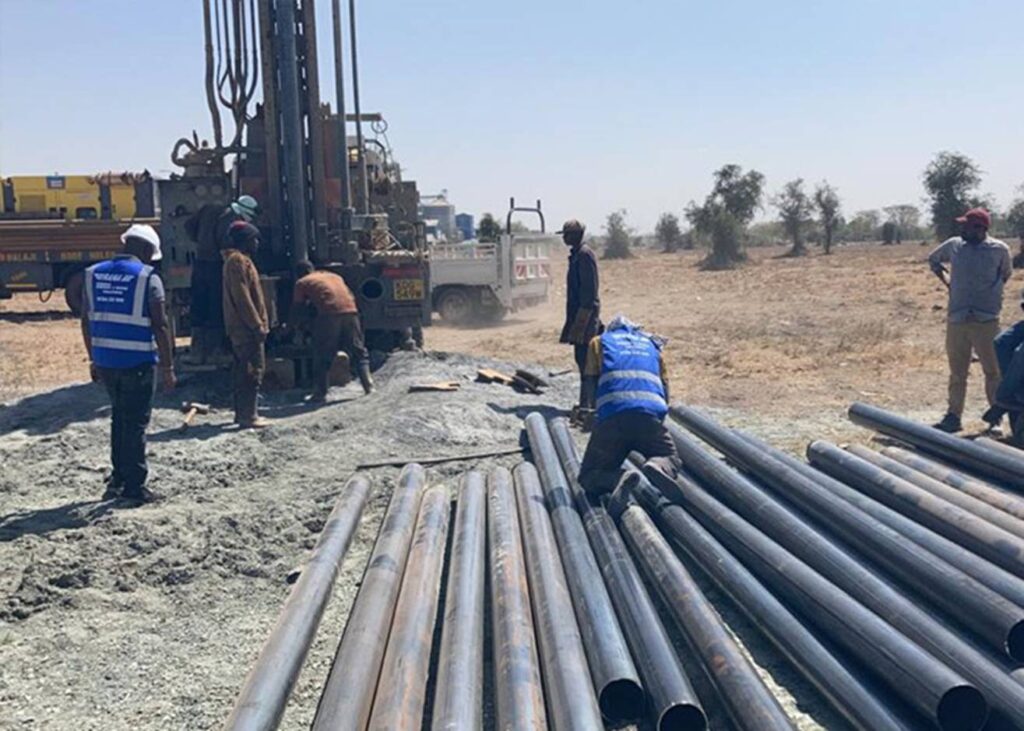
Our Borehole Drilling Process at FRISCO Engineering
At RANA LTD, we provide comprehensive borehole drilling solutions designed to meet your specific needs. Our process includes:
- Hydrogeological Survey: This step determines the ideal drilling point and depth, ensuring maximum water yield.
- Permits: We submit the hydrogeological survey report to the Water Resources Authority (WRA) and obtain the required permits before proceeding.
- Borehole Construction: This involves the drilling itself, installing casings, gravel packing, and thorough borehole development/cleaning to ensure a clean water source.
- Test Pumping: This phase assesses the aquifer’s performance, determining water yield and recovery, which helps us design the appropriate pumping system for your needs.
Why Borehole Drilling is Essential in Kenya
Kenya faces significant water scarcity due to erratic rainfall and over-reliance on surface water sources. With FRISCO Engineering’s borehole drilling services, you can access underground water resources and reduce dependence on unreliable public water supplies. Whether you need water for domestic, agricultural, or industrial use, a professionally drilled borehole is a cost-effective and sustainable option.
Borehole Drilling for Agriculture
Agriculture in Kenya heavily relies on consistent water supplies, particularly during the dry seasons. FRISCO Engineering provides agricultural borehole drilling solutions that ensure farmers have access to reliable water for irrigation and livestock farming. Our solar-powered irrigation systems are designed to lower operational costs and boost productivity, making us a trusted partner in the agricultural sector.
The Economic Impact of Borehole Drilling
Investing in a borehole significantly reduces dependence on unpredictable water sources, leading to lower operational costs and enhanced productivity. Industries such as construction, manufacturing, and agriculture benefit from having a dedicated water source, preventing costly delays and optimizing operations.
At FRISCO Engineering, our borehole drilling services support Kenya’s economic growth by ensuring water availability for key sectors. Our solutions are cost-effective and long-lasting, designed to withstand the toughest conditions.
Sustainable Water Solutions with FRISCO Engineering
Borehole drilling not only provides a reliable water supply but also contributes to sustainable development in Kenya. RANA LTD prioritizes responsible water use, ensuring that our projects protect the environment and address water scarcity. When you choose us, you invest in both your future and Kenya’s environmental sustainability.
How to drill a borehole in Kenya; What the drilling cost entails
- Mobilization
This is the transfer to the well site of the rig, equipment, and labor. We cost mobilization by distance. A borehole project 500kms away from our office will pay more for mobilization than one that is 50kms away. Mobilization costs allow for bush clearing and site preparation costs. This is to ready the borehole drilling site for the drilling rig and all other heavy equipment
- Borehole drilling
This is the actual process of sinking a well in the ground in order to obtain water. The depth of sinking depends on the reading of the hydro-geological survey report. This report states the depth, amount of water expected, and the geological structure of the soil and rock underneath. The common size of the borehole well is 8 inches in diameter, but the surface section is 10 inches. Some wells are larger, going up to 14 inches in diameter
3. Casing
We line the walls of the borehole with mild steel or polyvinyl chloride (uPVC) casings. This is to keep the wall from collapsing throughout the lifetime of the borehole. We install 4mm – 4.5mm thick steel casings where the well has boulders, and where mud drilling is conducted. uPVC casings are installed in wells that lack boulders or that are rich in sand, and the water is highly saline. High salinity causes intense rusting on steel casings over time, hence the preference for uPVC casings in such wells
There are 2 types of casings
3.1. Continuous casings. They line the sections where the aquifer(s) is absent. They serve as water storage units because this is where the water is held. Surface casing are set from the mouth of the well downwards to the point where the walls are stronger. It could be as short as 3M, or as deep as 30M. Surface casings are 8″ in diameter
3.2. Slotted casings. They line the aquifer sections to allow water into the well. The slots are 1mm to 2mm in size
Our installation ratio of continuous and slotted casings is 70:30. This ensures maximum percolation of the water from the aquifer into the borehole
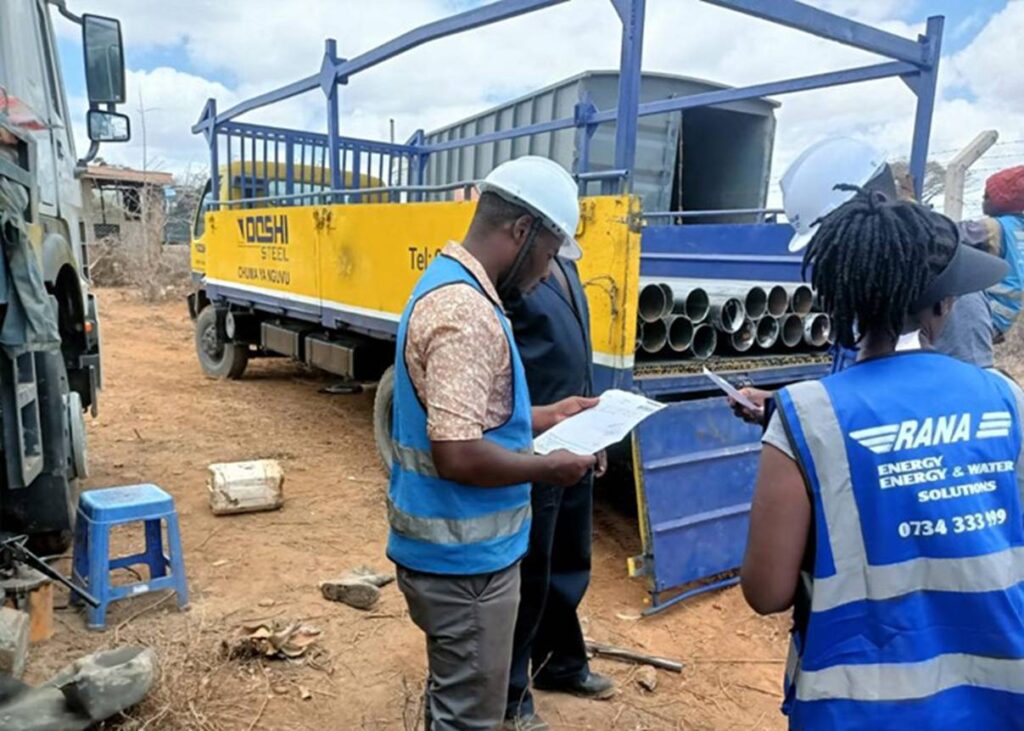
4. Graveling
It is the application of gravel sand between the borehole walls and the mild steel casings. Gravel filters soil and other impurities and keeps the casings firmly in position. Our gravel size is 2mm to 4mm, and well rounded
5. Flushing and capping
The well is cleaned of all chippings, a process referred to as flushing which is done after casing and also after graveling. Where casing is not carried out, flushing is done too. It is the process of pushing water within the well under intense pressure, then releasing it as a jet from the mouth of the well. Flushing allows optimal water flow from the aquifer to the well, and it precedes test pumping. In a high yielding borehole, the water within the well is used to clean it up. Where the well is low in yield, additional water is sourced for externally and added into the well.
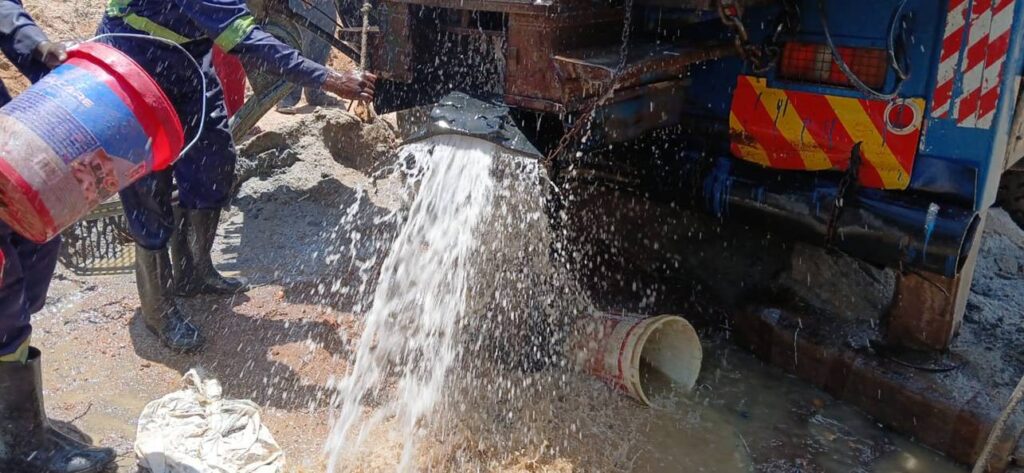
After flushing, the well is sealed at the top with a cap to prevent dirt and other material from getting in
6. Test pumping
We draw out borehole water for 24 hours. This shows the yield of the well, recharge rate and water level. It is with this report that we determine the right solar or electric submersible water pump. Before the test pumping process, we determine the most suitable test pumping water pump and the right pipe diameter to use based on the estimated volume of water in the well. Our test pumping pipe diameter sizes are installed as;
| Estimated Borehole Yield | Test Pumping Pipe Diameter |
| 0.5 – 10 cubic litres per hour | 1″ |
| 11 – 25 cubic litres per hour | 1-1/2″ |
| > 25 cubic litres per hour | 2″ |

